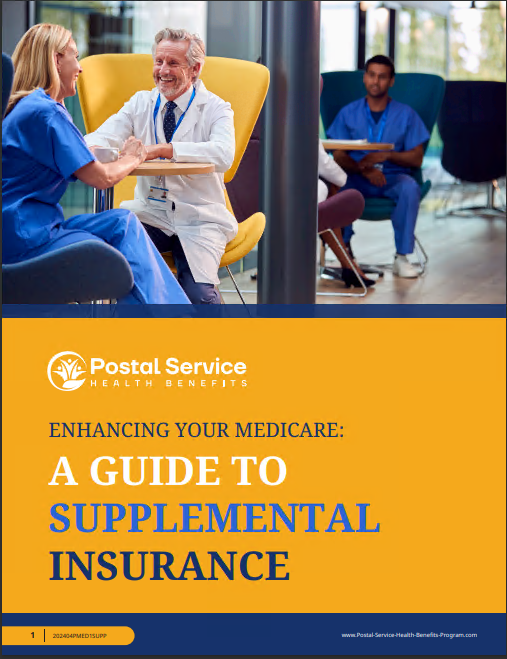Key Takeaways
-
The 2025 health insurance overhaul introduces the Postal Service Health Benefits (PSHB) program, transforming healthcare for USPS employees and retirees.
-
Medicare enrollment will be crucial for maintaining coverage under the new system, impacting both costs and benefits.
Understanding the 2025 Health Insurance Overhaul
If you’re a USPS employee or retiree, your health insurance landscape is about to undergo a major transformation. Starting January 1, 2025, the Postal Service Health Benefits (PSHB) program will replace the Federal Employees Health Benefits (FEHB) program. This change aims to better address the unique needs of postal workers while also reshaping your healthcare options.
Let’s dive into what this overhaul means for you and your family.
What Is the PSHB Program?
The PSHB program is a new health insurance initiative specifically designed for USPS employees, retirees, and their eligible family members. It’s separate from the FEHB program, meaning you’ll need to familiarize yourself with entirely new plan options, costs, and requirements.
Here are some key points to keep in mind:
-
Separate System: Unlike FEHB, which includes other federal employees, the PSHB program is exclusively for USPS personnel and their families.
-
Coverage Continuity: While many aspects may feel familiar, the PSHB program’s rules, premiums, and benefits could differ significantly.
Why Is This Happening?
The shift to PSHB is part of a strategic effort to stabilize USPS finances while meeting the healthcare needs of its workforce. By separating postal workers’ health benefits into a dedicated program, the USPS can focus on tailoring options that align with the specific demands of your profession.
How Does the Transition Affect You?
Automatic Enrollment: Are You Covered?
If you’re currently enrolled in an FEHB plan, you’ll likely be automatically transitioned to a comparable PSHB plan. However, automatic enrollment doesn’t mean it’s a perfect fit. You’ll want to:
-
Review your new plan’s coverage.
-
Compare its costs and benefits to other available options.
-
Make any necessary adjustments during Open Season.
Mark Your Calendar: Open Season Dates
Open Season for the PSHB program runs from November 11 to December 9, 2024. This is your opportunity to:
-
Explore all PSHB plan options.
-
Compare premiums, out-of-pocket costs, and coverage details.
-
Make changes or select a new plan to start January 1, 2025.
Medicare’s Role in the New System
Who Needs Medicare Part B?
Starting in 2025, Medicare-eligible retirees and family members must enroll in Medicare Part B to maintain PSHB coverage. This requirement applies to those who qualify for Medicare after January 1, 2025. However, exceptions exist for retirees not already enrolled in Medicare Part B as of this date.
Medicare Part B covers outpatient care, which can significantly reduce your out-of-pocket expenses when coordinated with PSHB benefits.
How Medicare and PSHB Work Together
When enrolled in both Medicare and a PSHB plan:
-
Medicare Pays First: Medicare Parts A and B will cover primary healthcare costs.
-
PSHB Covers the Rest: Your PSHB plan will act as secondary insurance, covering copayments, coinsurance, and other remaining costs, depending on the plan’s specifics.
Avoiding Medicare Penalties
If you delay Medicare Part B enrollment, you could face a lifetime late enrollment penalty. The penalty increases the longer you wait and adds to your Part B premium. Ensure you enroll during your Initial Enrollment Period (IEP) or a Special Enrollment Period (SEP) tied to this transition.
Exploring Your Coverage Options
What Happens If You’re Not Eligible for Medicare?
If you’re not Medicare-eligible, don’t worry—you can still enroll in a PSHB plan. These plans are designed to provide comprehensive coverage even without Medicare integration. Once you become eligible for Medicare, you’ll need to enroll in Part B to maintain PSHB coverage.
Government Contributions: What’s Changing?
The government will continue to contribute a significant portion of your health insurance premiums under the PSHB program. However, the specific percentages or amounts may vary depending on the plan you select. Be sure to review these details during Open Season to understand your out-of-pocket responsibilities.
What’s Changing Financially?
Premiums and Costs
The PSHB program introduces new premium structures. While some plans may closely resemble your current FEHB costs, others might be higher or lower. Comparing plans is essential to finding one that fits your budget and healthcare needs.
Out-of-Pocket Expenses
With Medicare coordination, many retirees may see a reduction in out-of-pocket costs for covered services. However, every plan is different. Review each option’s deductible, copayment, and coinsurance levels carefully to make an informed choice.
Preparing for the Transition
Staying Informed
The USPS and the Office of Personnel Management (OPM) will provide detailed information about the PSHB program as the transition date approaches. Watch for communications that include:
-
Plan comparisons.
-
Premium rates and subsidies.
-
Enrollment instructions and deadlines.
Taking Advantage of Resources
From online tools to webinars and customer support hotlines, resources will be available to help you navigate this new system. Use these tools to:
-
Compare plans side by side.
-
Estimate your costs under different scenarios.
-
Get answers to any questions you have.
What This Means for Retirees
If You Already Have Medicare Part B
If you’re already enrolled in Medicare Part B, you’ll experience streamlined benefits coordination under the PSHB program. This setup often results in lower out-of-pocket expenses for medical services.
If You Don’t Have Medicare Part B
If you’re not enrolled in Part B by January 1, 2025, you might be exempt from the requirement, depending on your retirement date. However, it’s worth considering whether enrolling could save you money in the long run.
Your Action Plan
Reviewing Your Options
During Open Season, take the time to:
-
Assess your healthcare needs, including routine care and specialized treatments.
-
Compare the available PSHB plans for coverage, costs, and provider networks.
-
Make adjustments to ensure your plan aligns with your needs.
Preparing for Medicare Enrollment
If you’re eligible but not yet enrolled in Medicare Part B, start planning now. Enroll on time to avoid penalties and ensure seamless coverage with your PSHB plan.
Utilizing USPS and OPM Resources
The tools and resources offered by USPS and OPM are invaluable for navigating this transition. Whether it’s comparing plans or getting your questions answered, don’t hesitate to make full use of what’s available.
What’s Next for USPS Health Benefits?
The shift to the PSHB program is a major milestone for USPS employees and retirees. While it introduces new rules and options, it also offers opportunities to better align your healthcare with your needs. By staying informed and proactive, you can make the most of this transition and secure coverage that works for you and your family.






